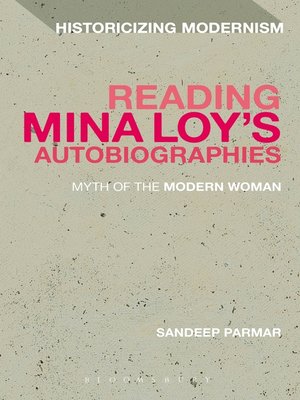Reading Mina Loy's Autobiographies
ebook ∣ Myth of the Modern Woman · Historicizing Modernism
By Sandeep Parmar

Sign up to save your library
With an OverDrive account, you can save your favorite libraries for at-a-glance information about availability. Find out more about OverDrive accounts.
Find this title in Libby, the library reading app by OverDrive.



Search for a digital library with this title
Title found at these libraries:
| Library Name | Distance |
|---|---|
| Loading... |
Mina Loy is recognised today as one of the most innovative modernist poets, numbering Gertrude Stein, Marcel Duchamp, Djuna Barnes and T.S. Eliot amongst her admirers.
Drawing on substantial new archival research, this book challenges the existing critical myth of Loy as a 'modern woman' through an analysis of her unpublished autobiographical prose. Mina Loy's Autobiographies explores this major twentieth century writer's ideas about the 'modern' and how they apply to the 'modernist' writer-based on her engagement with twentieth-century avant-garde aesthetics-and charts how Loy herself uniquely defined modernity in her essays on literature and art. Sandeep Parmar here shows how, ultimately, Loy's autobiographies extend the modernist project by rejecting earlier impressions of avant-garde futurity and newness in favour of a 'late modernist' aesthetic, one that is more pessimistic, inward and interested in the fragmentary interplay between the past and present.
Drawing on substantial new archival research, this book challenges the existing critical myth of Loy as a 'modern woman' through an analysis of her unpublished autobiographical prose. Mina Loy's Autobiographies explores this major twentieth century writer's ideas about the 'modern' and how they apply to the 'modernist' writer-based on her engagement with twentieth-century avant-garde aesthetics-and charts how Loy herself uniquely defined modernity in her essays on literature and art. Sandeep Parmar here shows how, ultimately, Loy's autobiographies extend the modernist project by rejecting earlier impressions of avant-garde futurity and newness in favour of a 'late modernist' aesthetic, one that is more pessimistic, inward and interested in the fragmentary interplay between the past and present.







